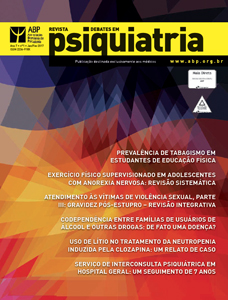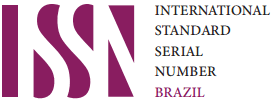Prevalence of smoking in physical education students
DOI:
https://doi.org/10.25118/2236-918X-7-1-1Keywords:
Smoking, prevalence, physical education, tobacco productsAbstract
Introduction: As early as the 17th and 18th centuries, famous painters from all over Europe already depicted characters smoking – an indication of how quickly the habit of smoking spread to become one of the greatest acculturation phenomena in the world. Objective: To assess the prevalence of smoking among students of Physical Education at Universidade Federal do Acre (UFAC). Methods: This was a cross-sectional, analytical study. Questionnaires were applied based on the Global Health Professions Student Survey and the Fagerström test. Results and discussion: Of the 226 respondents, 58% were male and 73.5% were single; mean age was 24.16 years. In the sample, 219 (96.9%) were non-smokers, and only seven (3.1%) were smokers (5.06 cigarettes/day), i.e., prevalence was low. Interacting with friends who smoke had a significant effect as a factor that leads to the habit of smoking (p < 0.005). This is due to the social use of tobacco and group identification. Also, 31.5% of the sample had already used other smoking tobacco products, and the current prevalence was 6.2% (higher than the prevalence of smoking). Conclusions: The 21st century has been showing a high prevalence of use of smoking tobacco products other than cigarettes, especially smoking hookahs. This occurs, on the other hand, due to acculturation, and on the other, to the success of anti-tobacco strategies.
Downloads
Metrics
References
Rosemberg J. Nicoti na droga universal. São Paulo: SES/CVE; 2003.
Organización Panamericana de la Salud. La epidemia de tabaquismo: los gobiernos y los aspectos económicos del control del tabaco. Washington: OPS; 2000.
Araújo JA, Menezes AMB, Dórea AJPS, Torres BS, Viegas CAA, da Silva CAR, et al. Diretrizes para cessação do tabagismo. J Bras Pneumol. 2004;30:S1-S76.
Brasil, Ministério da Saúde, Organização Pan-Americana da Saúde. Tabaco e pobreza, um círculo vicioso: a convenção quadro de controle do tabaco: uma resposta. Brasília: Ministério da Saúde; 2004.
Mirra AP, Rosemberg J. A história da luta contra o tabagismo no Brasil: trinta anos de ação [Internet]. 2004 [cited 2016 Dec 22]. htt p://www.amb.org.br/teste/comissoes/anti_tabagismo.htm
World Health Organizati on (WHO). The millennium development goals and tobacco control. Geneva: WHO; 2005.
Oliveira SMC, Leite WS. Tabagismo e sua relação com a educação médica. Rev Debates Psiquiatr. 2015;5:6-15.
Menezes A, Palma E, Holthausen R, Oliveira R, Oliveira PS, Devéns E, et al. Evolução temporal do tabagismo em estudantes de medicina, 1986, 1991, 1996. Rev Saude Publica. 2001;35:165-9.
Andrade AG, Bassit AZ, Kerr-Corrêa F, Tonhon AA, Boscovitz EP, Cabral M. Fatores de risco associados ao uso de álcool e drogas na vida, entre estudantes de medicina do estado de São Paulo. Rev ABP-APAL. 1997;4:117-26.
Kerr-Corrêa F, Andrade AG de, Bassit AZ, Boccuto NMVF. Uso de álcool e drogas por estudantes de medicina da Unesp. Rev Bras Psiquiatr. 1999;21:95-100.
Stempliuk Vde A, Barroso LP, Andrade AG, Nicastri S, Malbergier A. Comparati ve study of drug use among undergraduate students at the University of São Paulo – São Paulo campus in 1996 and 2001. Rev Bras Psiquiatr. 2005;27:185-93.
Boland M, Fitzpatrick P, Scallan E, Daly L, Herity B, Horgan J, et al. Trends in medical student use of tobacco, alcohol and drugs in an Irish university, 1973-2002. Drug Alcohol Depend. 2006;85:123-8.
Serra de Carvalho L. Comportamento tabágico e ati tudes de controlo de tabagismo dos estudantes de Medicina da Universidade da Beira Interior [mestrado]. Covilhã: Universidade da Beira Interior; 2012.
Halty LS, Hütt ner MD, Oliveira Neto IC, Santos VA, Marti ns G. Análise da uti lização do Questi onário de Tolerância de Fagerström (FTQ) como instrumento de medida da dependência nicotí nica. J Pneumologia. 2002;28:180-6.
World Health Organizati on (WHO). MPOWER: a policy package to reverse the tobacco epidemic. Geneva: WHO; 2008.
Schoenborn CA, Adams PE. Health behaviors of adults: United States, 2005-2007. Vital Health Stat. 2010;245:1-132.
Brasil, Ministério da Saúde, Insti tuto Nacional do Câncer, Coordenação de Prevenção e Vigilância. A situação do tabagismo no Brasil: dados dos inquéritos do sistema internacional de vigilância do tabagismo da Organização Mundial da Saúde realizados no Brasil entre 2002 e 2009. Rio de Janeiro: INCA; 2010.
Capello Filho L, Bizerra PL, Pinho SL, Paiva LA, Souza RE, Silva CNCG, et al. Tabagismo entre estudantes de um curso de graduação em Educação Física. Rev Bras Fisioter. 2008;12:38.
Ramis TR, Mielke GI, Habeyche EC, Oliz MM, Azevedo MR, Hallal PC. [Smoking and alcohol consumpti on among university students: prevalence and associated factors]. Rev Bras Epidemiol. 2012;15:376-85.
Silva Junior CT, Braga MU, Vieira HV, Bastos LDP, Tebaldi TF, Ronchetti RM, et al. Prevalência de tabagismo entre estudantes de graduação em medicina da Universidade Federal Fluminense. Pulmão RJ. 2006;15:11-5.
Magliari RT, Pagliusi AL, Previero BM, Menezes FR, Feldman A, Novo NF. Prevalência de tabagismoem estudantes de faculdade de medicina. Rev Med (São Paulo). 2008;87:264-71.
Zetter EW, Nudelmann LM, da Cunha DP, Mattos CH, Sacholl M, Verde FV, et al. Prevalência do tabagismo entre estudantes de medicina e fatores de risco associados. Rev AMIRGS. 2005;49:16-9.
Menezes AMB, Hallal PC, Silva F, Souza M, Paiva L, D’ávila A, et al. Tabagismo em estudantes de medicina: tendências temporais e fatores associados. J Bras Pneumol. 2004;30:223-8.
Sawicki WC, Rolim MA. Graduandos de enfermagem e sua relação com o tabagismo. Rev Esc Enferm USP. 2004:38:181-9.
Brasil, Ministério da Saúde, Secretaria de Vigilância em Saúde, Secretaria de Atenção à Saúde. Política nacional de promoção da saúde. Brasília: Ministério da Saúde; 2006.
Menezes RS, Nunes MP, Silveira RO, Pizzato LG, Cunha ALC, Grüdtner M, et al. Variação dos sintomas depressivos entre o pré e o pós-operatório de pacientes de cirurgia de revascularização miocárdica. Rev ABP-APAL. 1995;17:1-6.
Jawad M, Abass J, Hariri A, Rajasooriar KG, Salmasi H, Millett C, et al. Waterpipe smoking: prevalence and attitudes among medical students in London. Int J Tuberc Lung Dis. 2013;17:137-40.
Vanderhoek AJ, Hammal F, Chappell A, Wild TC, Raupach T, Finegan BA. Future physicians and tobacco: an online survey of the habits, beliefs and knowledge base of medical students at a Canadian university. Tob Induc Dis. 2013;11:9.
Senkubuge F, Ayo-Yusuf OA, Louwagie GM, Okuyemi KS. Water pipe and smokeless tobacco use among medical students in South Africa. Nicotine Tob Res. 2012;14:755-60.
Poyrazoglu S, Sarli S, Gencer Z, Günay O. Waterpipe (narghile) smoking among medical and non-medical university students in Turkey. Ups J Med Sci. 2010;115:210-6.
American Lung Association. Tobacco policy trend alert. An emerging deadly trend: waterpipe tobacco use. Washington: American Lung Association; 2007. docplayer.net/20870757-Tobacco-policytrend-alert.html
Morton J, Song Y, Fouad H, Awa FE, Abou El Naga R, Zhao L, et al. Cross-country comparison of waterpipe use: nationally representative data from 13 low and middle-income countries from the Global Adult Tobacco Survey (GATS). Tob Control. 2014;23:419-27.
Szklo AS, Sampaio MM, Fernandes EM, Almeida LM. [Smoking of non-cigarette tobacco products by students in three Brazilian cities: should we be worried?]. Cad Saude Publica. 2011;27:2271-5.
Smith-Simone S, Maziak W, Ward KD, Eissenberg T. Waterpipe tobacco smoking: knowledge, attitudes, beliefs, and behavior in two U.S. samples. Nicotine Tob Res. 2008;10:393-8.
Auf RA, Radwan GN, Loffredo CA, El Setouhy M, Israel E, Mohamed MK. Assessment of tobacco ependence in waterpipe smokers in Egypt. Int J Tuberc Lung Dis. 2012;16:132-7.
Kassim S, Al-Bakri A, Al’absi M, Croucher R. Waterpipe tobacco dependence in U.K. male adult residents: a cross-sectional study. Nicotine Tob Res. 2014;16:316-25.
Daniza Ivanovic M, Carmen Castro G, Rodolfo Ivanovic M. Factores que inciden en el habito de fumar de escolares de educación basica y media del Chile. Rev Saude Publica. 1997;31:30-43.
Segat FM, Santos RP, Guillande S, Pasqualotto AC, Benvegnu LA. Fatores de risco associados ao tabagismo em adolescentes. Adoles Latinoam. 1998;1:163-9.
Nakashima M, Miura K, Morikawa Y, Nishijo M, Nakanishi Y, Sakurai M, et al. [Effect of smokefree medical school on smoking behavior of medical students]. Nihon Koshu Eisei Zasshi. 2008;55:647-54.
US Department of Health and Human Services, Centers for Disease Control and Prevention, Division of Nutrition, Physical Activity, and Obesity. Implementing a tobacco-free campus initiative in your workplace [Internet]. 2007 [cited 2016 Dec 22]. tttp://www.cdc.gov/tobacco/global/
Downloads
Published
How to Cite
Conference Proceedings Volume
Section
License

This work is licensed under a Creative Commons Attribution-NonCommercial 4.0 International License.
Debates em Psiquiatria allows the author (s) to keep their copyrights unrestricted. Allows the author (s) to retain their publication rights without restriction. Authors should ensure that the article is an original work without fabrication, fraud or plagiarism; does not infringe any copyright or right of ownership of any third party. Authors should also ensure that each one complies with the authorship requirements as recommended by the ICMJE and understand that if the article or part of it is flawed or fraudulent, each author shares responsibility.
Attribution-NonCommercial 4.0 International (CC BY-NC 4.0) - Debates em Psiquiatria is governed by the licencse CC-By-NC
You are free to:
- Share — copy and redistribute the material in any medium or format
- Adapt — remix, transform, and build upon the material
The licensor cannot revoke these freedoms as long as you follow the license terms. Under the following terms:
- Attribution — You must give appropriate credit, provide a link to the license, and indicate if changes were made. You may do so in any reasonable manner, but not in any way that suggests the licensor endorses you or your use.
- NonCommercial — You may not use the material for commercial purposes.
No additional restrictions — You may not apply legal terms or technological measures that legally restrict others from doing anything the license permits.






























